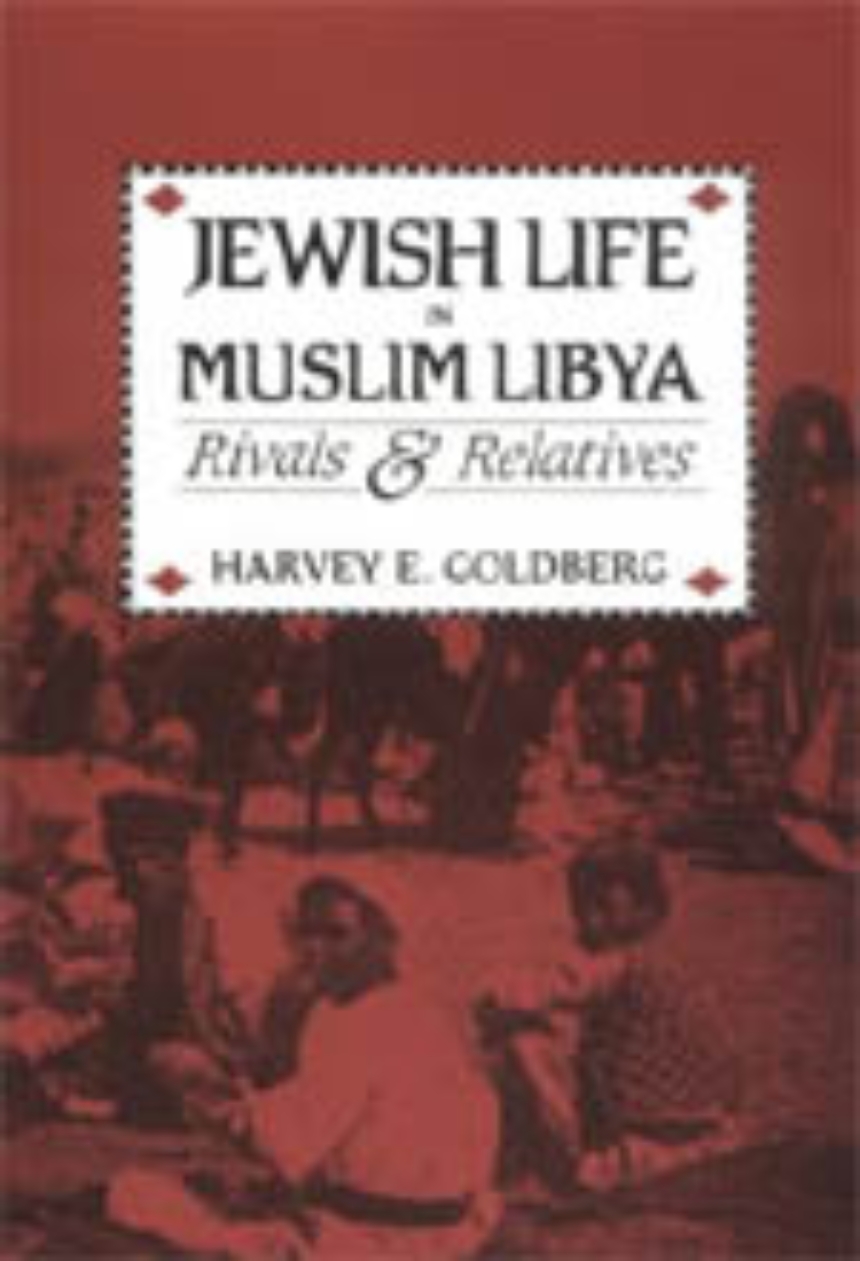Jewish Life in Muslim Libya
Rivals and Relatives
In 1949 more than 35,000 Jews lived in Libya, but close to ninety percent had left before Libya attained its independence in 1952. Jewish Life in Muslim Libya combines historical and anthropological perspectives in depicting the changing relations between Muslims and Jews in Libya from the early nineteenth century up to the middle of the twentieth century.
Harvey E. Goldberg shows that the cultural and religious worlds of the Jewish and Muslim communities in Libya were deeply intertwined in daily life and largely remained so despite political and social changes under successive Ottoman and Italian rule. He documents the intricate symbolic linkages of Jews and Muslims in different periods and in a variety of settings. His accounts of traditional Jewish weddings, of mock fights between Jewish teams that took place in early nineteenth-century Tripoli, and of the profession of street peddling demonstrate that, despite age-old images of Jews as outsiders or infidels, Jews were also an essential and familiar part of the local Islamic society.
Goldberg’s narrative continues through the British Military Administration in Libya, a period which saw growing Libyan nationalism and, in 1945, three days of riots in which more than 130 Jews were killed. Goldberg reflects on how these events both expressed and exacerbated a rupture in the social fabric linking Muslims and Jews, setting the scene for the mass emigration of Libyan Jews from their homeland.
Harvey E. Goldberg shows that the cultural and religious worlds of the Jewish and Muslim communities in Libya were deeply intertwined in daily life and largely remained so despite political and social changes under successive Ottoman and Italian rule. He documents the intricate symbolic linkages of Jews and Muslims in different periods and in a variety of settings. His accounts of traditional Jewish weddings, of mock fights between Jewish teams that took place in early nineteenth-century Tripoli, and of the profession of street peddling demonstrate that, despite age-old images of Jews as outsiders or infidels, Jews were also an essential and familiar part of the local Islamic society.
Goldberg’s narrative continues through the British Military Administration in Libya, a period which saw growing Libyan nationalism and, in 1945, three days of riots in which more than 130 Jews were killed. Goldberg reflects on how these events both expressed and exacerbated a rupture in the social fabric linking Muslims and Jews, setting the scene for the mass emigration of Libyan Jews from their homeland.
Table of Contents
Preface
1. Introduction
2. Jewish Life in Muslim Tripoli in the Late Qaramanli Period
3. The Ottoman Period: Political Change and Traditional Rhetoric
4. Jewish Weddings in Tripolitania: A Study in Cultural Sources
5. Itinerant Jewish Peddlers in Tripolitania at the End of the Ottoman Period and under Italian Rule
6. Jewish-Muslim Religious Rivalry in Tripolitania
7. The Anti-Jewish Riots of 1945: A Cultural Analysis
8. History and Cultural Process: Change and Stability in the Meaning of Jews in Libyan Society
Notes
References
Index
1. Introduction
2. Jewish Life in Muslim Tripoli in the Late Qaramanli Period
3. The Ottoman Period: Political Change and Traditional Rhetoric
4. Jewish Weddings in Tripolitania: A Study in Cultural Sources
5. Itinerant Jewish Peddlers in Tripolitania at the End of the Ottoman Period and under Italian Rule
6. Jewish-Muslim Religious Rivalry in Tripolitania
7. The Anti-Jewish Riots of 1945: A Cultural Analysis
8. History and Cultural Process: Change and Stability in the Meaning of Jews in Libyan Society
Notes
References
Index
